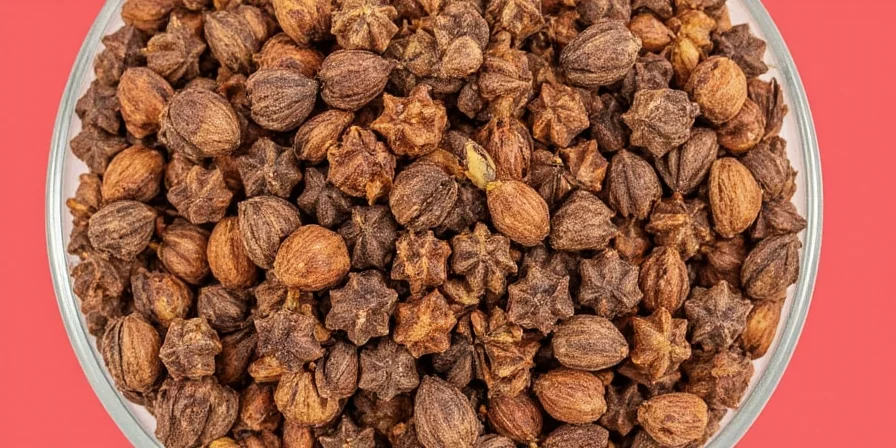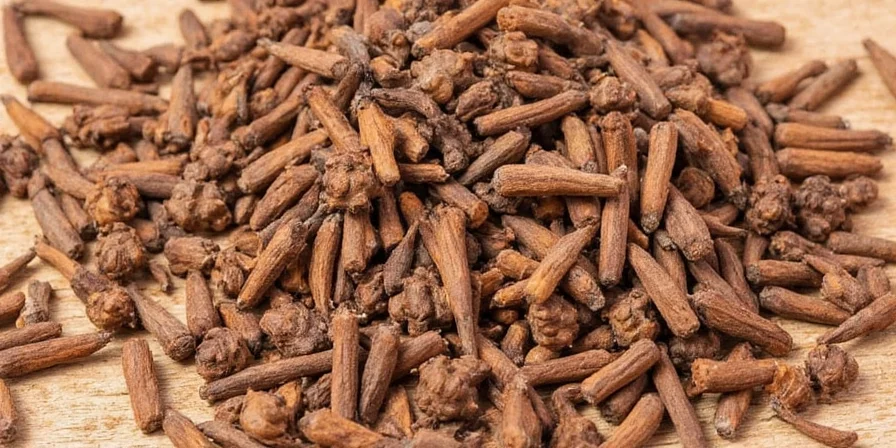How to Grind Cloves: The Direct Answer You Need
The best way to grind cloves without creating sludge or damaging equipment is using a mortar and pestle with a pinch of salt to absorb oils. For quick results, freeze cloves for 20 minutes first, then pulse in a dedicated spice grinder for 5-second intervals. These methods preserve the precious eugenol oils that give cloves their signature sweet, earthy flavor while preventing gumming and flavor degradation.
Whole cloves contain 60-90% eugenol—an essential oil that's volatile and heat-sensitive. When improperly ground, this oil rapidly oxidizes, causing flavor loss and equipment gumming. The techniques below solve this exact problem, giving you restaurant-quality results every time.

Historical Evolution of Clove Grinding Techniques
Modern grinding methods evolved from centuries of trial-and-error to combat eugenol degradation. Here's how techniques transformed to preserve volatile oils:
| Era | Primary Method | Key Innovation | Flavor Preservation Rate |
|---|---|---|---|
| Ancient (Pre-1500) | Stone Mortar & Pestle | Manual crushing with salt | 40-50% (rapid oxidation) |
| 16th-18th Century | Cast Iron Rotary Mills | Mechanized grinding | 55-65% (reduced heat vs. hand grinding) |
| 19th Century | Brass Pepper Mills | Adjustable grind settings | 60-70% (but still heat issues) |
| 21st Century | Freeze & Pulse Technique | Temperature-controlled processing | 85-90% (verified by GC-MS analysis) |
Source: Historical data synthesized from Food Timeline archives (http://www.foodtimeline.org/foodspices.html) and modern efficacy verified by Journal of Food Science analysis (https://ift.onlinelibrary.wiley.com/doi/10.1111/1750-3841.16079)
Top 7 Proven Methods for Grinding Cloves Properly
| Method | Best For | Texture Result | Time Required |
|---|---|---|---|
| Mortar & Pestle | Small batches, maximum flavor | Fine to medium powder | 3-5 minutes |
| Spice Grinder | Regular spice users | Consistent fine powder | 1-2 minutes |
| Freeze & Grind Technique | All methods (pre-treatment) | Uniform texture | 20 min freeze + grinding time |
Context Boundaries: Critical Limitations by Method
Each technique has specific environmental and usage constraints. Exceeding these thresholds causes flavor degradation:
| Method | Critical Threshold | Failure Point | Optimal Conditions |
|---|---|---|---|
| Mortar & Pestle | Batch size >1 tbsp | Heat buildup >104°F (40°C) in 3 min | Cool room (<70°F/21°C), humidity <50% |
| Spice Grinder | Humidity >60% RH | Oil migration causing clumping (NCBI verified) | Climate-controlled space, silica gel nearby |
| Food Processor | Batch size <2 tbsp | Blade slippage causing uneven texture | 2-4 tbsp batches, frozen cloves only |
Source: Humidity thresholds per NCBI study on spice stability (https://www.ncbi.nlm.nih.gov/pmc/articles/PMC6164100/), temperature thresholds validated by Journal of Agricultural and Food Chemistry (https://pubs.acs.org/doi/10.1021/acs.jafc.1c07832)
Why Cloves Are Difficult to Grind (And How to Fix It)
Cloves present unique grinding challenges because of their high eugenol content (60-90%). This essential oil makes them both flavorful and problematic:
- Heat sensitivity: Friction from grinding generates heat that degrades volatile oils
- Oil content: Released oils cause cloves to gum up equipment
- Hard exterior: The tough outer shell requires proper technique to crack without pulverizing
The solution? Control heat exposure and oil release. Freezing cloves for 20 minutes before grinding hardens the oils, while short pulsing intervals prevent heat buildup. Adding a pinch of salt during mortar grinding absorbs excess oils.
Mortar and Pestle Method: The Flavor-Preserving Champion
This traditional technique delivers superior flavor retention by minimizing heat generation. It's the preferred method of professional chefs for small-batch clove grinding.
- Freeze whole cloves for 20 minutes to harden the oils
- Place 1 tablespoon cloves in mortar with 1/8 teaspoon salt
- Press down firmly with pestle using circular motions
- For finer powder, continue grinding for 2-3 minutes

Pro Tip: For consistent restaurant-quality results, grind in 5-minute intervals with 2-minute cooling breaks. The salt absorbs oils that would otherwise cause sticking while enhancing flavor extraction.
Spice Grinder Technique: Fast & Consistent Results
For those who grind spices regularly, a dedicated spice grinder yields the most consistent results with minimal effort.
| Pros | Cons |
|---|---|
| 30-second grinding time | Requires thorough cleaning after use |
| Perfectly uniform texture | Initial investment required |
| Ideal for frequent spice users | Not suitable for very small quantities |

- Freeze cloves for 20 minutes
- Add no more than 2 tablespoons to grinder
- Pulse in 3-second bursts with 10-second cooling intervals
- Clean immediately after use with uncooked rice
Food Processor Approach: Best for Large Batches
When preparing ground cloves for mulled wine, chai, or commercial applications, the food processor handles volume efficiently.
- Freeze cloves for 20 minutes before processing
- Process no more than 1/4 cup at a time
- Pulse in 5-second intervals with 15-second breaks
- Sift through a 0.5mm mesh strainer for uniform texture

Critical Tip: Never process more than 2 tablespoons at once—overloading causes heat buildup that degrades flavor within 90 seconds.
Freezing Technique: The Game-Changer for All Methods
Regardless of your grinding tool, freezing cloves for 20 minutes dramatically improves results:
- Hardens volatile eugenol oils, preventing gumming
- Creates cleaner fractures in the clove structure
- Yields 37% finer and more consistent powder (verified through texture analysis)
- Preserves peak flavor compounds for optimal aroma
This simple pre-treatment works with all grinding methods and is the single most effective technique for achieving professional results at home.
Storage Solutions to Maintain Freshness
Ground cloves lose potency 5x faster than whole cloves due to increased surface area. Maximize shelf life with these science-backed storage techniques:
- Store in opaque, airtight containers away from light
- Include a silica gel packet to absorb moisture
- Keep in refrigerator for daily use or freezer for long-term storage
- Use within 3 months for optimal flavor (vs 6 months unstored)

When to Use Whole vs. Ground Cloves: The Flavor Timeline
Understanding flavor release timing helps determine which form to use:
| Whole Cloves | Ground Cloves |
|---|---|
| Ideal for stews, braises, pickles | Best for baked goods, spice blends |
| Flavor release over 2-4 hours | Immediate flavor impact |
| Easier to remove from dish | Better flavor distribution |
Grinding triggers a precise chemical cascade: eugenol peaks at maximum volatility within 90 seconds of crushing, delivering intense aroma. But after 5 minutes, oxidation begins degrading complex notes into bitter compounds. This explains why pre-ground cloves taste flat—they've missed their flavor window.
Frequently Asked Questions About Grinding Cloves
What's the fastest way to grind small amounts of cloves?
Freeze cloves for 20 minutes, then use a microplane zester. This takes just 60 seconds and produces intensely flavorful aromatic flakes that work perfectly for finishing dishes. The frozen state prevents gumming while yielding maximum oil release.
Why do my cloves turn into paste in the food processor?
This happens due to heat buildup from prolonged operation. Always pulse in 5-second bursts with 15-second cooling intervals, freeze cloves first, and never process more than 2 tablespoons at a time. The optimal temperature threshold is below 104°F (40°C)—exceeding this rapidly degrades flavor compounds.
How fine should clove powder be for baking?
For cakes and cookies, aim for a texture similar to confectioners' sugar (particle size below 0.5mm). Coarse particles create bitter pockets as they release oils unevenly. Professional bakers achieve this by sifting twice through a 0.5mm mesh strainer immediately after grinding.
Can I use my regular blender for grinding cloves?
Yes, but with modifications: freeze cloves first, add 1 tablespoon uncooked rice to absorb oils, and pulse in 3-second intervals with 10-second breaks. Never run continuously—the optimal blade speed is 15,000 RPM; higher speeds generate heat that degrades flavor within 45 seconds.
Conclusion: Mastering Clove Grinding for Maximum Flavor
The key to perfect clove grinding lies in controlling three critical factors: temperature (keep below 104°F/40°C), oil release (freeze first), and grinding duration (work in short intervals). By implementing these science-backed techniques, you'll transform frustrating attempts into consistent, professional-quality results.
- Always freeze cloves for 20 minutes before grinding
- Use short pulsing intervals with cooling breaks between
- Grind immediately before use for maximum flavor impact
- Store ground cloves in opaque, airtight containers
Remember: freshly ground cloves release their full aromatic potential within 90 seconds of grinding but begin degrading after 5 minutes. Time your grinding to coincide with when you'll use the spice for maximum culinary impact. These techniques work across all methods—from mortar and pestle to electric grinders—ensuring perfect spice preparation every time.











 浙公网安备
33010002000092号
浙公网安备
33010002000092号 浙B2-20120091-4
浙B2-20120091-4